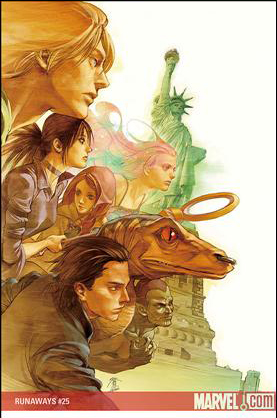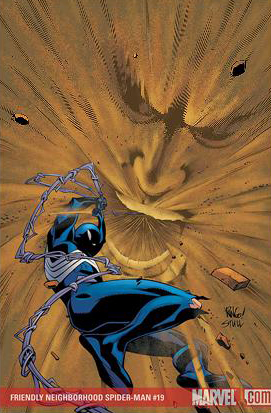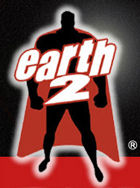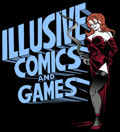Runaways
#25
Writer: Joss Whedon
Artist: Michael Ryan
Really, this one is a no-brainer for fans
of Joss Whedon. A team of troubled and confused teen-agers
have discovered great evil in their background. Overcoming
that evil, aka their parents, aka a criminal
organization known as The Pride, the runaway youths struggle
to balance the needs of a ďfoundĒ family with continuing to
kick crimeís butt. Need it be mentioned that the most effective
derriere-kickers happen to be the female members of the team?
Runaways creator Brian K. Vaughan
left the series by removing the somewhat supernatural element
and nemesis that drove the team, which allows for a little
more freedom. Only the Pride seemed to know about their cosmic
overlords, and their kids need room to explore the Marvel
Universe.
So Whedon debuts by taking them back to New
York City. Their previous trip, it seems, sparked the interest
of the Kingpin, which makes for a classic Whedonesque confrontation
between the kids and Wilson Fisk.
For newcomers drawn to this book because
of the new creative team, the story does a decent job of catching
things up to speed. Itís forty-three or so issues to summarize
in three pages, but Whedon and Michael Ryan provide just enough
information for newbies to understand the personal conflicts,
and just why these awkward kids could be feared. Then they
get things rolling in a new direction.
Except itís not really new. Whedon was a
longtime fan of the book, perhaps because he already had its
themes resonating with his own. As such, it feels like no
change in the writing at all, and thatís kind of a good thing.
This book had already been known for smart, realistic characterization
and tight plotting. Hey, itís still here.
New artist Ryan also feels like a good fit.
His style differs slightly, but in no way drastically, straddling
the slightly more manga feel the book sometimes had with a
more standard Marvel style. Importantly, as a penciler (heís
inked by Rick Ketcham), Ryan is a good actor, and the kids
look like kids.
In several scenes, Whedon and Ryan prove
that the Runaways still have a lot to learn. Luckily for us,
the creative team knows perfectly well what itís doing.
Also on the Stands:
Friendly Neighborhood Spider-Man #19:
Oh, so now that itís been revealed why Peter Parker
is in the black costume, we can do some referencing to it
in other books. Thatís lame editing or timing which leaves
a bitter taste on this otherwise decent Spider-Man story.
Thatís decent -- not great -- as itís also clearly a story
meant to sucker in those intrigued by Spider-Man 3.
Black costume, Sandman and -- oh, wait again -- ďBack In BlackĒ
isnít even a proper event. Itís just a time period in Spider-Manís
adventures when he wears a black costume to boost sales. Even
though Peter David is a great writer, this is the sort of
marketing event that drove a lot of us away from the character
in the nineties.
Ghost Rider: Trail of Tears #3: The
first issue had me intrigued. I missed the second issue, and
now this third one has me kind of lost, with not much happening
except for a little of the ultra-violence that Clayton Crain
draws so well. This Ghost Rider (if thatís who it is) doesnít
flaunt the flaming skull, preferring a relatively more subtle
appearance. Garth Ennis is trustworthy enough, but right now,
the initial heat from this book has died down.
The Immortal Iron Fist #4: This, on
the other hand, delves into the unknown history of a Marvel
B-list character without losing the reader. Maybe itís because
we can see the direct connection, or maybe because itís tied
more firmly to the Marvel Universe proper. Or maybe because
Ed Brubaker and Matt Fraction are simply two great writers
working at the top of their game with love and affection for
Iron Fist. Theyíre bringing back an old enemy, and even if
you donít know who that is, they devote time to effectively
building his menace. I donít know who that enemy is, and I
find myself caring.
Heralds of Galactus #2: Other than
teaching a new word -- ďproemialĒ -- this mini-series hasnít
really had much to offer those who donít drool over its basic
concept. Keith Giffen has a good grip on the cosmic, and,
supported by Scott Kolins and Andrea DiVito, tells decent
stories. But theyíre mostly forgettable, just vaguely keeping
these characters in the readersí minds until the next big
event.
The Incredible Hulk #105: The next
big event, of course, is World War Hulk andÖoh, cripes,
he should wipe out the Illuminati. Greg Pak doesnít kill time
with this; he ends Planet Hulk with a real sense of
tragedy, and a sense of nobility to these alien races that
had formerly been characterized as villains. That includes
the Hulk, Greenskin, Sakaar -- whatever you want to call him.
The end of this will have you on the edge of your seat for
next month. Come on, Hulk, and Öbring your friends.
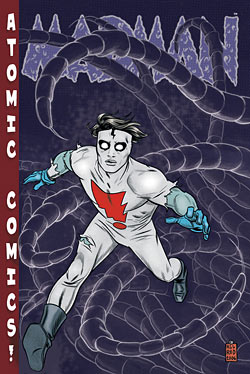 |
Madman Atomic Comics #1: Mike Allred
returns to the character that made him famous, and gives us
a lot of philosophy instead of the fun the series originally
had. Thatís okay; this is a creator in a state of growth and
change. That reflects in his art, as Allred and his colorist
wife Laura experiment with a few different textures. Thatís
befitting a loony character being forced to confront the inconsistencies
in himself. Hopefully whatever emerges from this exploration
will still have some of the fun, even if he does end up being
a bit weightier than before.
Marvel Zombies vs. Army of Darkness #2:
Writer John Layman captures the tones of both Sam Raimi and
Robert Kirkman well enough in this prequel to Marvel Zombies.
Ash sure reads like Ash. And the last page -- well, I donít
know whether to laugh or be utterly horrified. But then, thatís
how itís always been with this concept. Itís not for the squeamish,
but some of you sick bastards will really dig this.
New Excalibur #18: The old Excalibur
did a lot of dimension-hopping; itís a concept that Chris
Claremont seems to love. Heís also fairly good at keeping
the concept streamlined, so for what itís worth, itís easy
to jump on to this issue -- as long as Captain Britain is
a character that interests you. Everyone else gets minimal
time, and the villainís motivation seems a little forced.
Itís not bad; itís just not on the top of the read pile.
Zemo: Born Better #3: Having lost
track of the machinations of Zemo over the years -- I fell
away from Thunderbolts -- this mini-series has me guessing.
Fabian Nicieza has created a complex character. If you think
heís a villain, thereís plenty to disprove the theory here,
but itís also hard to give in and just call him a hero. So
instead, Iíll just call this a book that makes me really want
to read the conclusion. Not because it should end -- some
of it does feel rushed -- but because itís been a surprisingly
good read.
Sight Unseen:
Buffy the Vampire Slayer #2: All I
can say is that this book might, I say might, just get my
wife to read a comic book.
Omega Flight #1: Yet another spin-off
of Civil War, but this one has Beta Ray Bill. Iím at
least going to flip through it, and Marvelís counting on that.
Savage Tales #1: This oneís for Ric
Bretschneider. Sword and sorcery and salaciousness all in
one package. Okay, I canít vouch for the salaciousness.
Welcome To Tranquility #5: More and
more people have figured out how good Gail Simone is. This
original series set in a retirement village for superpowers
has been lots of fun. So why not pick it up for yourself?
